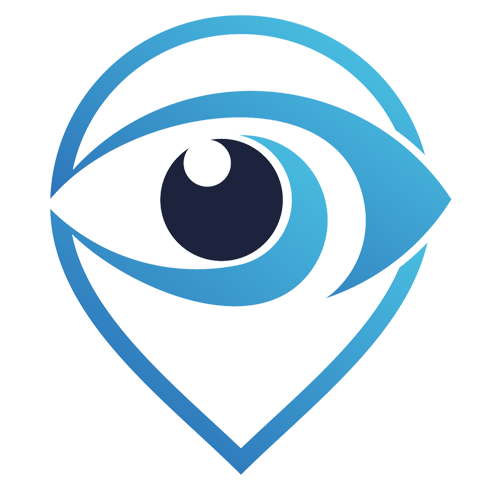Faq Section
Top Questions About Lasik & Top Answers !
Questions Answer
The human eye forms part of a general group called camera-type eyes. Why are they called so? Because like the film in a camera, the human eye focuses light on to a light sensitive membrane called the retina. If we look at a cross-sectional image of the eye, here’s how the different parts would look: Right in front of the eye is the cornea. It is a transparent structure that helps to focus incoming light. It is the curve of the cornea that determines its power. Behind it is a coloured ring-shaped membrane called the iris. A clear fluid called the aqueous humor fills the space between the cornea and the iris. The iris has an adjustable circular opening called the pupil, which can expand or contract depending on the amount of light entering the eye
20/20 is a measurement of how clear your distance vision is. If your standard vision test reports 20/20 vision, it implies that, standing 20 ft away, you are able to view feet exactly what a person with normal vision is able to see from 20 ft. 20/40 vision, it implies that you need to stand as close as 20 ft to view what a person with normal vision is able to see from 40 ft away 20/15 vision, it indicates you can see clearly from 20 ft what a person with normal vision can see from 15 ft. Simply put, you can see a lot better than what a normal person does.
Do you have trouble seeing close objects? Distant objects? Both? These are common vision problems called refractive errors. There are various methods to correct the refractive errors including- Glasses, contact lens and LASIK surgery amongst others. Glasses and contact lenses change the way light focuses on the inside of your eye. Refractive surgery changes the shape of your eye itself. Most often, a laser is used to reshape the cornea (clear front layer of the eye). This reduces your need for glasses or contacts.
LASIK or Laser-Assisted In Situ Keratomileusis is one of the most practiced laser eye surgery for the treatment Myopia (near-sightedness), Hyperopia (far-sightedness), Astigmatism (blurred vision). This laser vision correction technique is performed on the cornea so that light entering the eye can be focused on the retina for clearer vision.
LASIK or Laser-Assisted In Situ Keratomileusis, is one of the most practiced laser eye surgery for the treatment Myopia (near-sightedness), Hyperopia (far-sightedness), Astigmatism (blurred vision). This laser vision correction technique is performed on the cornea so that light entering the eye can be focused on the retina for clearer vision.
LASIK eye surgery is not for other eye diseases, including keratoconus, glaucoma, or cataracts retinal and optic nerve diseases.
A battery of pre-operative tests and check-ups are required to be conducted when undergoing LASIK eye treatment: Refraction: To check the correct power of your spectacles, or contact lenses Corneal Topography: To map the power of the cornea Corneal Pachymetry: To measures the thickness of the cornea Keratometry: To measure the curvature of the cornea Slit-lamp Examination: To estimate the condition of the cornea Tonometry: To checks the eye pressure Retinal check-up: To look through your pupil at the vitreous, retina and other structures located inside the back portion of the eye. You need to know that the standard LASIK operation uses a blade called microkeratome. This is just one form of LASIK. The others are bladeless LASIK and Wavefront LASIK.
Anaesthetic drops are applied to the eye Next, the LASIK surgeon creates a protective flap of the outer layer of the cornea using a microkera to me. At this point, the vision dims and becomes blurry for about a minute. You an see the flashing light of the laser and other procedural lights. Then the eye surgeon uses the Excimer laser to direct cool laser light into the inner layers of the cornea. The laser light is invisible but you can hear the constant clicking sound as it removes pre- determined amounts of tissue to reshape the cornea and correct the refractive error. The cornea is shaped depending on the treatment required-made flatter to treat Myopia (near-sightedness), steeper to treat Hyperopia (far-sightedness), and/or more spherical to treat Astigmatism (blurred vision). After the laser is administered, the LASIK surgeon carefully repositions and aligns the corneal flap, where it bonds itself instantly. Due to these extraordinary natural bonding qualities, there is no need for stitches, sutures or eye patches.
Lasik does away with the dependence on spectacles, and contact lenses, in just 15 minutes! After LASIK surgery, all you need is some rest till rapid visual recovery takes place. There is little or no post-operative pain to worry about. The LASIK surgery smoothly treats moderate to high refractive errors and leaves you with better vision and a better life.
There are different types of LASIK treatments Standard LASIK eye surgery Blade free Intralase ‘Femtosecond’ LASIK Custom LASIK Your surgeon will explain the one best suited for you, but make sure that you find out all the facts, before you decide to undergo surgery on your eyes.
Blade Free IntraLase ‘Femtosecond’ LASIK is a 100% blade-free procedure for those of you who feel hesitant about the 1st step in the regular LASIK surgery – Creation of the cornea flap. As the name suggests, the blade-free, or bladeless IntraLase method does not use a blade [microkeratome] in the procedure. Instead, it uses 2 distinct lasers to make the surgery more comfortable: 1 a femtosecond laser creates a thin corneal flap, and 2 an excimer laser, directed at the newly exposed eye surface, alters the shape of the cornea in the required fashion. IntraLase is a type of femtosecond pulse laser that is ultra-short. Eye surgeons use the IntraLase femtosecond laser to create the protective flap over your cornea instead of the usual microkeratome (surgical blade), and if you’re wondering, ‘femtosecond’ means one quadrillionth of a second! (Yes, that’s the speed at which the laser operates) Also known as the all-laser LASIK or IntraLASIKTM, this procedure takes 15-20 seconds per eye to create the corneal flap and approximately 10 minutes to complete the surgical process.
Anaesthetic drops are applied to the eye. A ring is placed over the eye to flatten the cornea in preparation for the blade free IntraLase method. The femtosecond laser beam creates a series of micro bubbles in the central layer of the cornea to create a corneal flap of predetermined dimensions. This laser is computer controlled to move circumferentially. The dimensions simply need to be entered into the computer, and the laser does its job. After this step, the regular LASIK procedure is observed, but the results obtained have been reported to be much better.
In case of Custom LASIK, a wave-front analyzer is used. This enables our ophthalmic surgeon to customize the conventional LASIK procedure for your eyes. Since this procedure is designed to specifically to suit your eyes, it results in much clearer and sharper vision than ever before. The latest wavefront technology is enabled to examine your cornea and provide unique dimensions for the creation of customized corneal flap. This results in high levels of accuracy in vision correction with little or no margin for errors. Custom LASIK is used for treating higher order aberrations, i.e. tiny imperfections in the optical system of your eyes which causes significant impact on the quality of vision. In fact, higher order aberrations have been linked to visual glares and halos. Traditional LASIK surgery can treat ordinary vision defects such as Myopia, Hyperopia and Astigmatism, but other irregularities need to be treated via Custom LASIK surgery using the wavefront technology.
So, what exactly does wavefront technology do? Very simply put, it studies the manner in which light enters your eye. Also known as a barometer, it takes 3-dimensional measurements of how your eye processes images. The resulting map of the eye is then programmed into the laser so as to guide the laser in re-shaping your cornea. Due to the personalized 3-D map, the precision achieved with Custom LASIK treatment is almost impossible to achieve with the traditional LASIK treatment.
1 Anaesthetic drops are applied to the eye. 2 The wavefront device transmits a safe ray of light into the eye. 3 This light is then reflected back off the retina, through the pupil and on to the device. 4 The reflection is then arranged into a unique pattern to capture all the lower and higher order aberrations. Both these kinds of visual irregularities are displayed as a 3-D map or wavefront map. 5 This information is electronically transferred to the laser and matched to the eye’s position via a computer so as to enable the eye surgeon to customize the LASIK treatment. 6 Hereafter, the regular LASIK procedure is carried out, but with more accurate results. Vision correction never got more personalized than this.
Apart from better vision and zero dependence on spectacles and contact lenses, which are obvious benefits obtained from a standard LASIK eye treatment, the other benefits experienced are: 1 The bladeless IntraLase method allows surgeons to tailor the corneal flap for each patient individually. Thus, patients get a customized experience suited just for them. . 2 There is greater precision, attributed to micron-level accuracy, and better visual result . 3 High degree of safety and predictability makes this method especially suited for difficult cases like- thin, flat or steeper corneas. 4 Less epithelial damage is experienced as compared to a microkeratome cut hence, there are fewer post operative complications . 5 Even in dim illumination, night driving especially, better contrast sensitivity is observed. Also, Custom LASIK treats both lower order (myopia, hyperopia and astigmatism) and higher order (glare, halos, shadow, etc) aberrations . 6 There are greater chances of achieving 20/20 vision, or better
LASIK eye surgery is effective in curing Myopia (near-sightedness), Hyperopia (far-sightedness), and Astigmatism (blurred vision). But it’s not for everyone. You will be eligible only if you satisfy the following conditions: 1. Age More than 18 years 2. Myopia -1.00D to -18.00D 3. Hyperopia +1.00D to +6.00D 4. Astigmatism +/-1.00D to +/- 6.00D 5. Stable Refraction No change in prescription power for 6 months Other criteria include: 1 You should be in good health, i.e., not suffering from uncontrolled diabetes, autoimmune or collagen vascular disease; or have any condition that compromises the immune response. 2 LASIK eye surgery is not for other eye diseases, including keratoconus glaucoma, cataracts, corneal disease, and certain retinal and optic nerve diseases. 3 Also, make sure you do not have certain eye conditions, including herpes simplex and herpes zoster. 4 Be sure to inform our LASIK eye doctors of any mental health conditions, eye problems like amblyopia (lazy eye), strabismus (muscle imbalance), or any recurrent, residual or active eye conditions that may influence healing. Other conditions that should be discussed with the LASIK, eye doctor include keloid scarring with previous surgical healing, back problems, and claustrophobia.
No, it is not. The procedure is done using eye drops to numb the eye. There is no injection involved.
No, it is not. The procedure is done using eye drops to numb the eye. There is no injection involved.
Lasik with the latest generation machines are very safe. Thirty five million eyes have undergone Lasik worldwide since the last 25 years.
Know the number (refractive power) treated does not come back. With advancing age, there may be near vision problems or other problems that are not connected with Lasik surgery.
NO. With today’s technology, there is no need to remain in the dark. Transparent protective glasses are to be worn for the first 3-4 days for protection of the eyes. The person can go back to normal activities in 3-4 days.
Yes, Minimum Age for doing lasik is 18 years.
You are right place ! Dr. Parul Dhroov Eye Clinic and Lasik Centre is the best Lasik Center.




